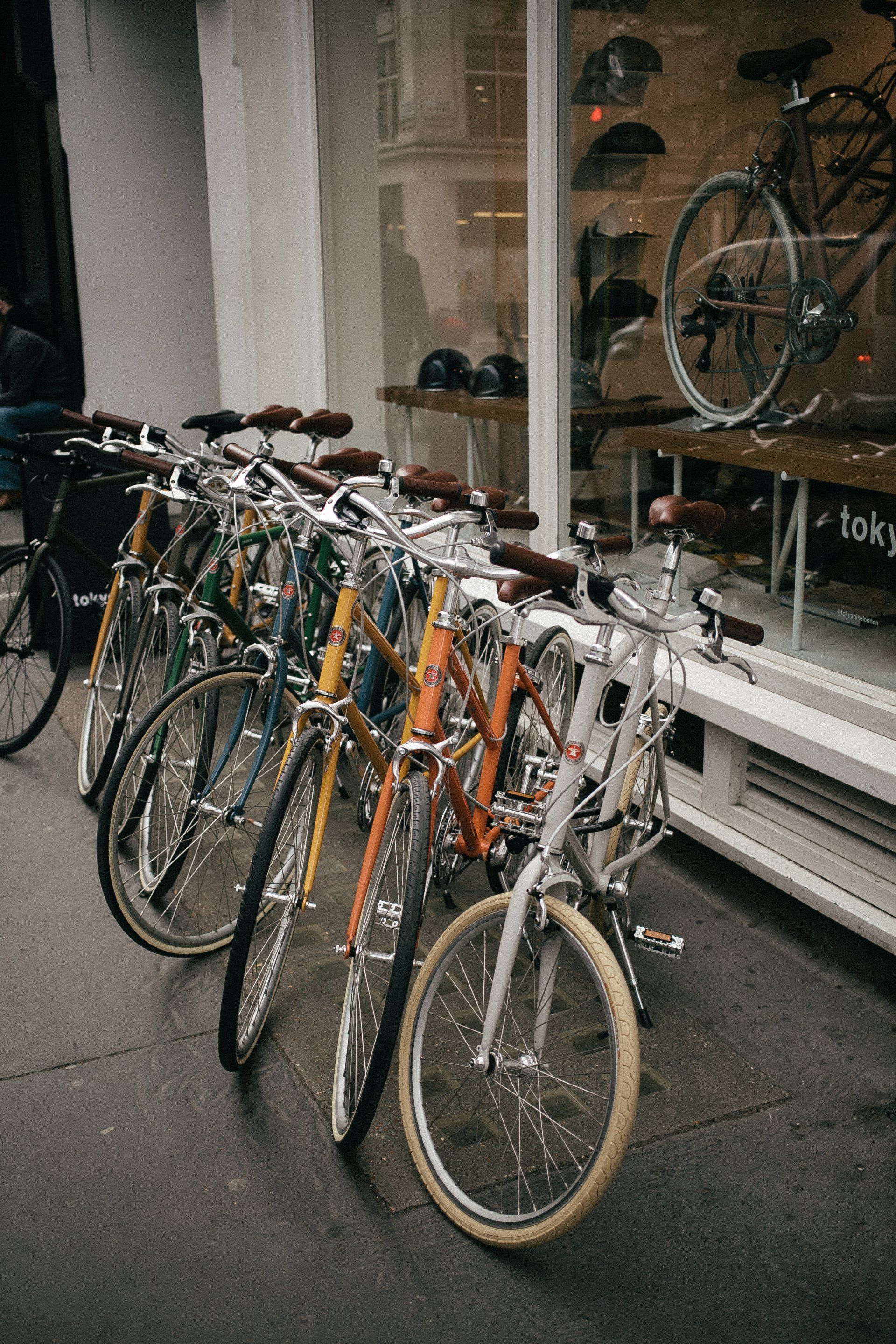Bike Racks Program

Beginning in 2013, this unique project offered businesses the opportunity to transform the community with works of public art, adding visual aesthetic to the community while offering residents and cycling enthusiasts a useful tool that helps promote cycling.
The Matching Grant
Grants will be awarded one per business up to $300 matching. Grants are only for the purchase of the racks and not installation. Most racks cost much less, and we will work with your business to find the best fit for your budget and space.
Finding a Good Location
The location you choose should meet the needs of bicyclists, consider where they want to park, not where you might like them to park. Bicyclists want both convenience (parking near the entrance to the building) and visibility (to deter theft/vandalism). Racks that are not close to the entrance or are hard to find will likely not be used.
Grant Program Process
- Business/agency/organization applies for grant.
- Site visit by staff to identify appropriate location for rack(s) and to meet with the person (owner or manager) who can approve location.
- Owner/manager requests bicycle rack(s) via e-mail or letter.
- Staff orders bicycle rack(s), which are shipped directly to the business/agency.
- Business/agency/organization has racks installed.
Rack Selection
ERRP has selected two different styles of loop racks in order to help maintain consistency throughout the community and provide grantees the ability to select a size that fits their needs. Hoop racks, also called U-racks, are designed to hold two bikes, one on each side, with the middle of the bike leaning against the rack.
On the flip-side Old-fashioned racks that hold only the wheel of the bicycle can damage bicycles. Those types of racks don’t work well with bicycles that have fenders or lack kickstands. Oftentimes bicyclists end up parking parallel to the rack which means only two bikes.
Spacing and Siting Standards
Each bicycle rack should be easily accessible. Consider the space that the bicycles will take up, not just the rack, and that people need room to maneuver their bicycles in and out. Each rack must be accessible without moving another bicycle. For a ‘single’ hoop rack you will need a footprint of 4 ft by 6 ft.
There should be at least 2 ft. between racks and a wall, but 3 ft. is ideal. There should still be a minimum 4 ft. of sidewalk clearance when a bicycle is parked at the rack so that pedestrians and wheelchair users can safely pass.
Installing bicycle racks too close to a wall or too close to each other wastes money because the racks can’t be used properly.
Covered Bicycle Parking helps buffer exposure to rain and/or sun can damage bicycles. Bicyclists will thank you for providing weather protection by giving you their business. Take advantage of existing overhangs or awnings this is a creative, low-cost way of providing some weather protection.
Are there trails that connect to us?
Yes! And pretty soon there’ll be more.
In fact, Eagle River is positioned to be the central hub of bike user activity in eastern Vilas County.
The Three Eagle Trail Foundation is completing its Eagle River Extension right now. It comes up into town at Railroad and Pine, right by the Dairy Queen.
Great Headwaters Trails, another local all-volunteer nonprofit group, is developing a 40 mile bike-pedestrian trail system. It will connect Eagle River to St. Germain, Conover, Phelps and Land O’ Lakes. It will connect Eagle River to the longest existing trail system in Vilas County, the 27 mile Heart of Vilas System that starts in St. Germain and runs up through Sayner to Boulder Junction.
Bike users – visitors with families, locals who are running errands, commuters who come to downtown Eagle River everyday to work, and many others will appreciate the welcome that a bike rack signals. And they’ll appreciate the place to park securely!
Great Headwaters Trails appreciates how the Eagle River community is waking up to all the potential benefits of bicycling and of providing services and goods to bike users. Bike racks provide a great additional piece of economic infrastructure to the trails being developed in and around Eagle River.
Questions about the Bike Racks program should be directed to Karen Margelofsky at (715)-477-0645 or Email
